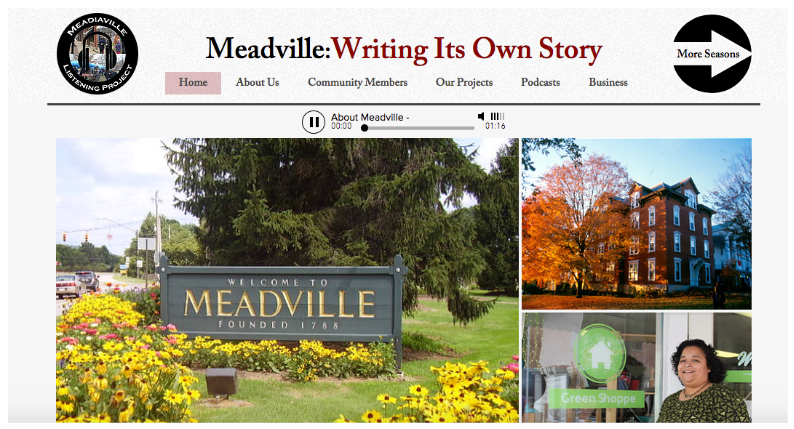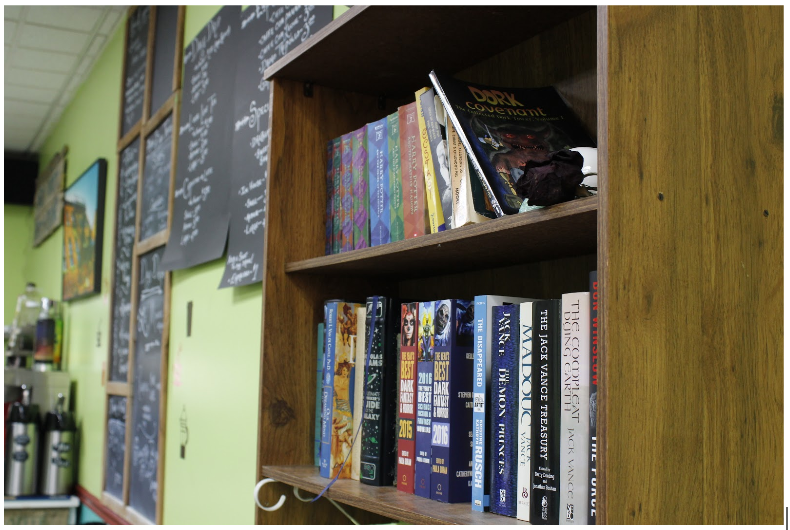Oral history interviews comprise an important part of my scholarly research practice, but only one part. Having trained as a graduate student in anthropological and ethnomusicological paradigms of participant-observation fieldwork, I tend to emphasize these in my current projects and to incorporate oral histories along with other types of structured interviews as means of following up on discussions and questions that arise more informally in the context of interacting with my interlocutors. Yet in teaching, I often have found that inverting that balance and emphasizing the solicitation and production of oral histories within class projects often (while still sometimes guiding students in development an ethnographic sense of the interviews’ socio-cultural contexts) works much better. There are two primary considerations that typically lead me to make this shift for my teaching: 1) the skills that are teachable in 14 weeks of classwork within a course in my program and 2) the challenging contexts of community-based fieldwork.
I teach most of my courses with Oberlin College’s Russian & East European Studies (REES) program. Students in my courses usually come from a wide array of disciplines and often one third to one half of them are Russian or REES majors, but at most I typically have only one or two students who have taken anthropology or ethnomusicology classes that emphasize the participant-observation methods of ethnographic research. While oral history comprises diverse practices and methodological orientations as well, I have found that the model of obtaining permission for a structured interview, recording and conducting that interview using prepared questions and questions extemporized in response to answers, and editing and analyzing the recorded product into an achievable form to require a more succinct and ultimately teachable set of skills than anthropological fieldwork. The latter incorporates comparable steps of obtaining permission, asking questions, and recording and presenting data, but because so much communication in participant-observation is non-verbal, in addition to the mechanical recording of interaction with interlocutors it also usually requires copious fieldnote-taking (often in contexts divorced from and subsequent to the observation) and the development of skills associated specifically with the traditions, professions, and/or life ways in which researchers learn to participate alongside their partners. Oral history, and specifically the Abbreviated Life History Model outlined on Brooke Bryan’s OHLA resource page (https://ohla.info/interviewing-101-a-few-resources-for-teaching-undergrads-how-to-interview-for-public-facing-digital-projects-within-one-term/), offers a set of procedures and associated skills that can readily be developed through scaffolded, recursive pedagogy over the course of several weeks, leaving plenty of time in a 14-week semester for the application of these skills to actual projects.
In addition, I have found that what I might describe as the “artificial” context of oral history interviewing is more adaptable to the resources of time and space that both my students and our community partners have at their disposal. “Artificial” should by no means imply that the results are not true, but rather that the practice of setting up a lengthy one-on-one interview in most cases takes the interviewee out of the type of context typically associated with the traditions or other life experiences that are the subject of the interview. (Within anthropological fieldwork, on the other hand, a researcher, though aware of her or his own impact on the “field” by virtue of being there, usually attempts to participate in the activities that are the focus of the research and thus situates much of the communication with interlocutors in contexts that are relatively familiar and deeply associated with the topic of the research). First, setting up interviews limits the time of interaction to a period when both researchers and interlocutors can (at least in ideal circumstances) concentrate on direct, verbal communication about the matter at hand. It is true that some community members are more willing and/or able to have a student join them in activities during their work or leisure time than to dedicate time solely to a life history interview; in working with members of Cleveland’s formerly vibrant (but now rather dispersed) Hungarian Roma-Gypsy community, however, my students and I have found that this is ultimately a less involved process for our community partners and for us, and one that requires the interest of only one community member at a time (as opposed to the permission of, for example, all the members of a household to have one or more of us participate in cooking or music traditions within the home). Second, having interviews conducted by only one or two students places smaller demands on the space and time of interlocutors than having an entire class visit a household, a place of business, or other intimate setting for participant-observation fieldwork. The latter approach, when given emphasis within a class, would ideally involve multiple such observations; this is something that I have done in previous courses that have had fewer than ten students, but with classes of greater size it becomes more difficult to oversee and guide student work in the field. My classes that have worked with Cleveland’s Roma-Gypsies have had more than ten students in them, and repeatedly incorporating such a great number into contexts of familial and professional music-making, whether in households or on stage, could be disruptive to the social spaces and attention that our community partners work to create in their performance practices. Third, this method has allowed us to work in contexts in which formerly large communities and even large families no longer exist as such, as is the case for many of the suburban Roma-Gypsies we interviewed. These practical considerations have served to set up project that, while still challenging to execute, have been manageable within the limitations on time, space, and community cohesion that we have faced.








